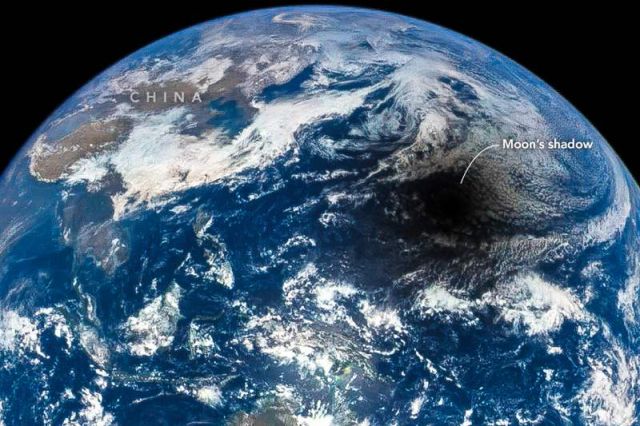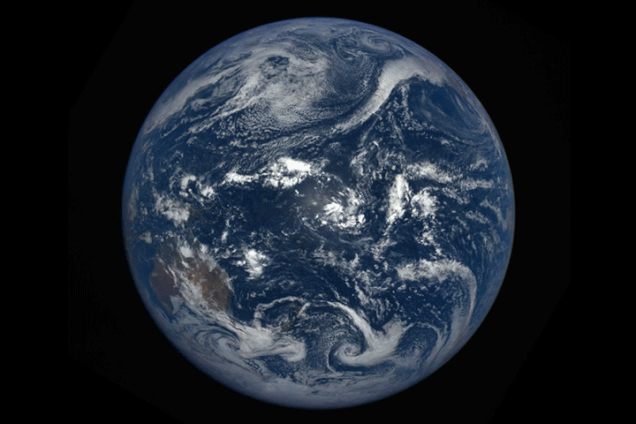The Deep Space Climate Observatory (DSCOVR) added another first to its collection of unique snapshots, by observing the total solar eclipse in the Western Pacific. Watch the animation…
The animation above was assembled from 13 images acquired on March 9, 2016, by NASA’s Earth Polychromatic Imaging Camera (EPIC), a four-megapixel charge-coupled device (CCD) and Cassegrain telescope on the DSCOVR satellite. Click on the link below the animation to download the individual images from the series.
Adam Szabo, NASA’s project scientist for DSCOVR, said:
“What is unique for us is that being near the Sun-Earth line, we follow the complete passage of the lunar shadow from one edge of the Earth to the other. A geosynchronous satellite would have to be lucky to have the middle of an eclipse at noon local time for it. I am not aware of anybody ever capturing the full eclipse in one set of images or video.”
In this, the only total solar eclipse of 2016, the shadow of the new Moon starts crossing the Indian Ocean and marches past Indonesia and Australia into the open waters and islands of Oceania (Melanesia, Micronesia, and Polynesia) and the Pacific Ocean. Note how the shadow moves in the same direction as Earth rotates. The bright spot in the center of each disk is sunglint—the reflection of sunlight directly back at the EPIC camera.
source NASA







Leave A Comment